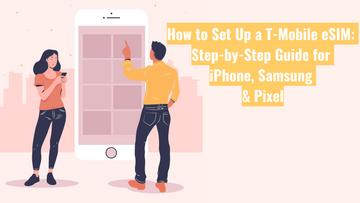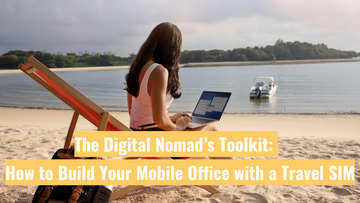Why Your eSIM Might Not Work: Device Compatibility and Carrier Limits Explained

eSIMs are becoming more common in smartphones and devices, especially for people who travel a lot or want the convenience of digital SIMs. But here’s the catch: just because your phone has eSIM doesn’t always mean it’ll work with every mobile provider—especially if you bought your device overseas.
In this blog, we’ll break down why some devices don’t work with certain eSIM carriers, what regional restrictions have to do with it, and how to make sure you won’t get caught out.
🌐 What is an eSIM?
An eSIM (short for embedded SIM) is a tiny chip built right into your phone. It works just like a regular SIM card but without the need to physically swap it out. You can download mobile plans directly onto your device, which is super handy if you're switching providers or heading overseas.
📱 Why Some Devices Don’t Support eSIM
Not all phones are made the same—even if they look identical on the outside. Manufacturers often release different versions of the same phone for different countries. These are called regional variants, and they come with different features depending on where they're sold.
For example:
iPhones sold in mainland China don’t support eSIM at all. Instead, they use dual physical SIM cards.
The same Samsung Galaxy model sold in the US might support eSIM, but the version sold in India may not.
This isn’t just about convenience—it’s often due to local laws, carrier agreements, or technical restrictions.
Why Your eSIM Won’t Work with Some Carriers
Even if your phone has eSIM, it might not work with every provider. Here’s why:
1. Hardware Limitations
Some phones simply don’t have the eSIM chip if they were built for countries where eSIM isn't allowed or supported.
2. Software Blocks
The phone’s software might disable eSIM depending on the region it's set up for. Even if you import a phone and change its settings, the eSIM feature might still be hidden or unusable.
3. Carrier Whitelists
Mobile providers—especially in places like the U.S. and Australia—only allow eSIM on phones they've tested and approved. If your phone model isn’t on their list, they won’t activate the eSIM.
4. Network Band Compatibility
Your phone might not support the right radio frequencies used by your local provider. This can cause issues even if the eSIM activates.
🧳 Real-Life Examples
Aussie Traveller in the U.S.
You bought an iPhone in mainland China. When you land in the U.S. and try to use a local eSIM plan, it won’t work—because that Chinese iPhone simply doesn’t support eSIM hardware.
U.S. User with a Global Android Phone
You order a Xiaomi or Samsung phone from overseas, and while it supports eSIM in theory, your U.S. carrier won’t activate it because the model isn’t certified for their network.












